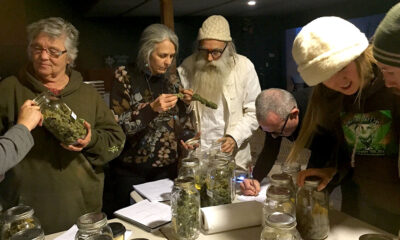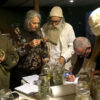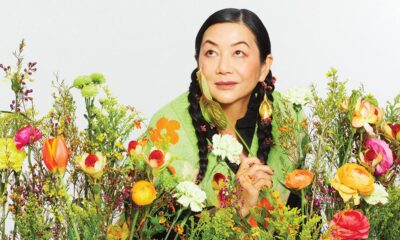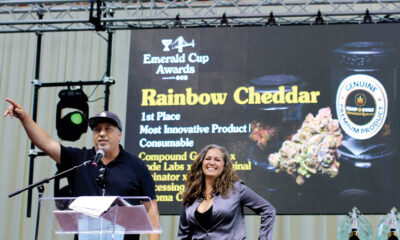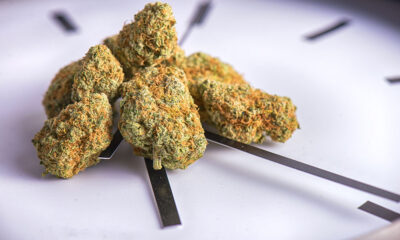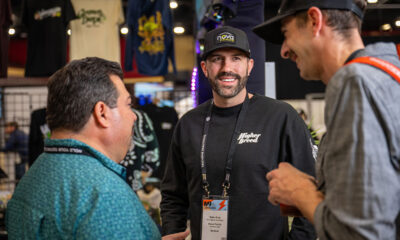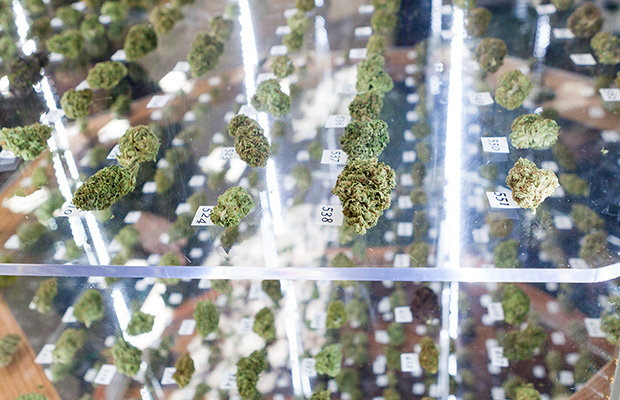
Cannabis
The Emerald Cup Expands in 2017
This year’s celebration of outdoor cannabis will include new categories and new challenges.
The world championship of marijuana cultivated outside in the full sun is almost upon us. We had the chance to talk with The Emerald Cup’s founder, Tim Blake, to get the full scoop in the weeks leading up to one of the most anticipated competitions in the industry.
Although The Emerald Cup has turned into an economic mega-event for the communities surrounding the Sonoma County Fairgrounds, the true heart of the weekend — the contest of sungrown cannabis — started 14 years ago at its spiritual home Area 101 in Mendocino County.
This year, over 10,000 revelers plan to make the trip to Santa Rosa, where they will find themselves in the industrial heart of the Northern California cannabis industry and in the center of the devastation in the recent wildfires that swept across California. In Santa Rosa, the Emerald Cup expects to provide a boost to a community that needs it, all while searching the wares of the world’s best cultivators. But reality will never be far away, as the fairgrounds that will host the Emerald Cup is currently hosting 80 FEMA trailers now house many who lost all in the recent fires.
Among the numerous efforts to support the surrounding area, The Emerald Cup is donating $50 from every competition entry fee directly to fire relief. A showing similar to last year — which saw 1,200 entries — could raise $60,000.
Entering The Emerald Cup
The competition officially began this month with an intake tour that crisscrossed California, as the tour stopped at major dispensaries like Oakland’s Harborside. However, the bulk of the Emerald Cup entries came closer to the deadline, which has been moved up year after year due to the increasing size of the competition, and concluded this year on Nov. 17.
“The truth is we get 80 percent of our entries the last three to five days,” Blake said. Last year, the intake tour brought in the first hundred submissions, but cannabis cultivators submitted 800 entries in the last three days.
Blake said he and his team are in the process of re-educating people about the new deadlines after years of dates a bit closer to the contest. But this year, as folks were busy harvesting their crops harvested and recovering from the fire, this educational push has been tough to pull off.
New Year, New Categories
The best-in-sun flower category is always the main attraction at the Emerald Cup, but over the years, many categories have been added. The best edible and topical trophies are prized in this transitional year for the industry, as many past winners are well positioned heading into 2018 and a win this year could be important for brand-recognition in a new recreational market. The CBD awards have also risen to prominence in recent years, as the anecdotal knowledge that the quality of life of severely sick people often gets better due to their cannabidiol use. This year, the CBD awards and will feature sections for flowers, concentrate, edibles, tinctures and topicals.
“To go from a simple flower contest when we first started the contest, we now have so many awards. We have over $70,000 in awards this year just in prizes,” said Blake.
The hash categories have also expanded wildly over the years to keep up with the times and 2017 will not go against the tide of that tradition. The hash section part of the cup will feature three returning categories for solventless, rosin and CO2 cartridges. It will also have one new category: distillate.
“What’s happening is we’re going into CO2 and cartridges, but as the state goes legal this year you’re going to see a lot of distillate,” said Blake. “Just people using other forms of butane and what not to distill down cartridge material. So we decided to open that up that category following last year when we opened up the CO2 category.”
Another new addition to this year’s cup will be the Terpene Bases Lab Awards. The awards will go to the entries with the most impressive and interesting terpene profiles in each of the flower and concentrate categories.
“The terpenes, which we used to judge in the contest blind without labeling, [this year] we’ll recognize those through SC Labs judging and they’ll go up and talk about it,” said Blake. The flower contest will still be a blind tasting, Blake said.
Beyond Organic
Last year, the Emerald Cup included the first edition of the regenerative farming award, with assistance from Jesse Dodd of Biovortex. When the cup started as an organic outdoor competition fourteen years ago, Blake says people would ask, “What’s this organic thing?” and over the years many of those folks came to understand to get a quality flower, concentrate or product you needed that organic farming to bring in those flavors and tastes.
“But now we’re realizing very quickly that when we came across our country a few hundred years ago, we ruined the topsoil of our Midwestern states and across this whole country because we just use chemical fertilizers, we just use pesticides and did things that don’t make living soil,” said Blake. The ultimate goal of the award is to bring people back to localized farming efforts to negate the carbon impact of shipping soil, pesticides, and other necessities all over the state.
Lab testing for safety has become increasingly important to the cup over the years. Blake pointed out to the perils of farmers further south from the Emerald Triangle are dealing with their industrial agriculture neighbors.
“They’re having trouble with the oversprays because most of the traditional agriculture is doing such heavy pesticide use, it’s hitting all the crops, and it’s like how come they get to do it and we don’t?” Blake said. “You’re talking about heavy toxic chemicals that shouldn’t be on anyone’s food in the first place, on anyone’s ground. We’re going to raise that bar, and people say “Why do we have to stand up to that bar?” Because we’re the cannabis industry and we should.”
Judging The Outdoor Cannabis
The judging process will take place over a few weeks. “We used to just get 12 flower judges and some concentrate judges,” said Blake. But that was a far simpler time. This year, the Emerald Cup will feature roughly 60 judges across the 20 categories.
“We don’t do a weekend judging like most people. Flower judges get together for three different long days and then they spend their time apart,” said Blake. “They’re spending eight to 10 hours on three different Saturdays to go through everything and end up going away and testing all the way through that to get to a top 50, then a top 20. It’s a laborious project.”
Blake says a lot of judges don’t come back. “We’ve only got two of the original judges from the original competition, everyone else I’ve lost,” Blake said, with a chuckle. “By the time you take up a month or a month and a half of your holiday season, and you’re committed to that and you do it a few years — that’s a very challenging thing to do.”
The judges in the original contest had to comb through a couple dozen entries, with the winner not even showing up out of fear of law enforcement. Last year, the Emerald Cup sorted through 650 flower samples. “It became something that was actually a little bit overwhelming,” said Blake. “We’ve done a few things to offset it. It’s fine if we don’t have as many entries because it’s really about quality rather than volume. It’s really about letting the very best come in and know our judges have more time for it.” He considered the idea of 2,000 flower entries daunting.
Without a doubt an Emerald Cup win in 2017 is the last big statement California cannabis brands can make before the adult use market opens January 1.
TELL US, do you like outdoor cannabis?



